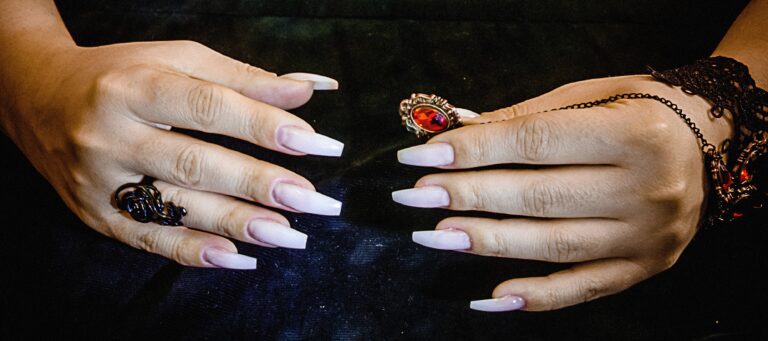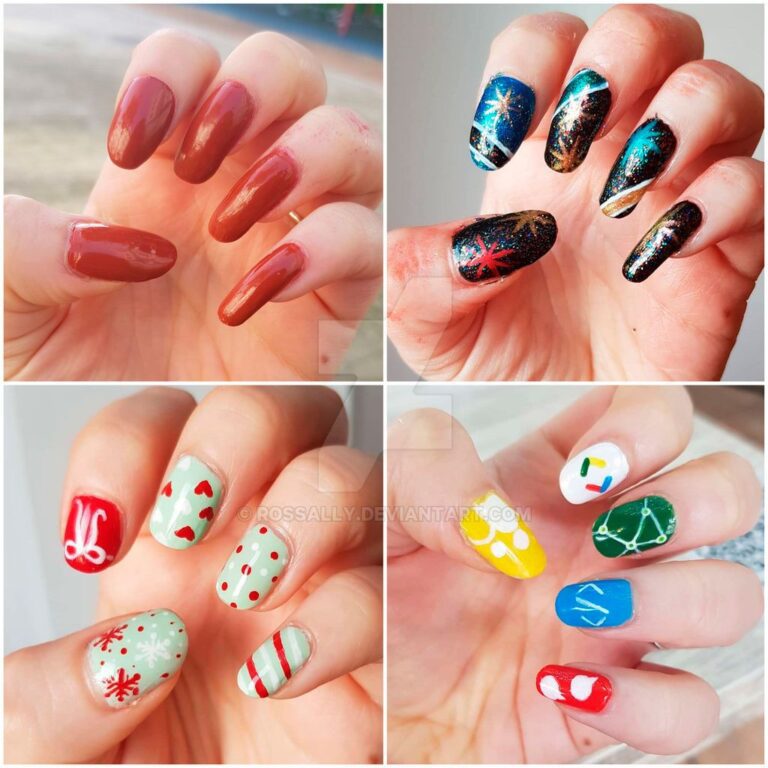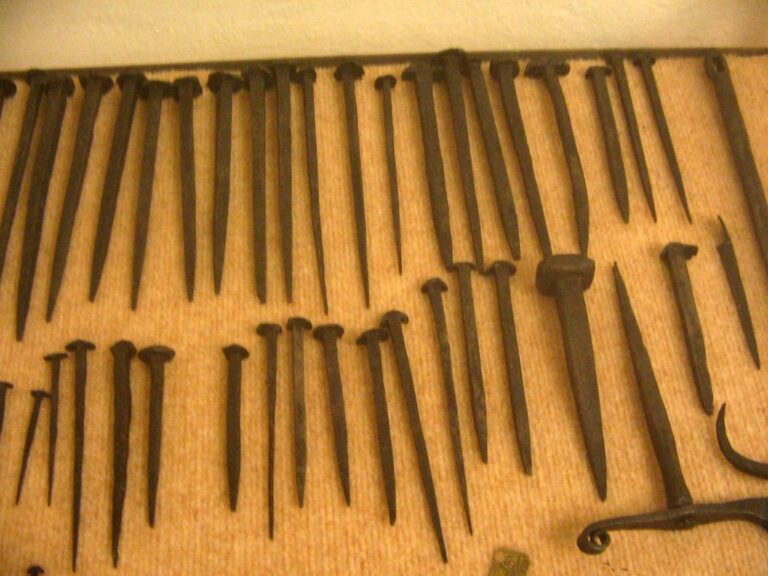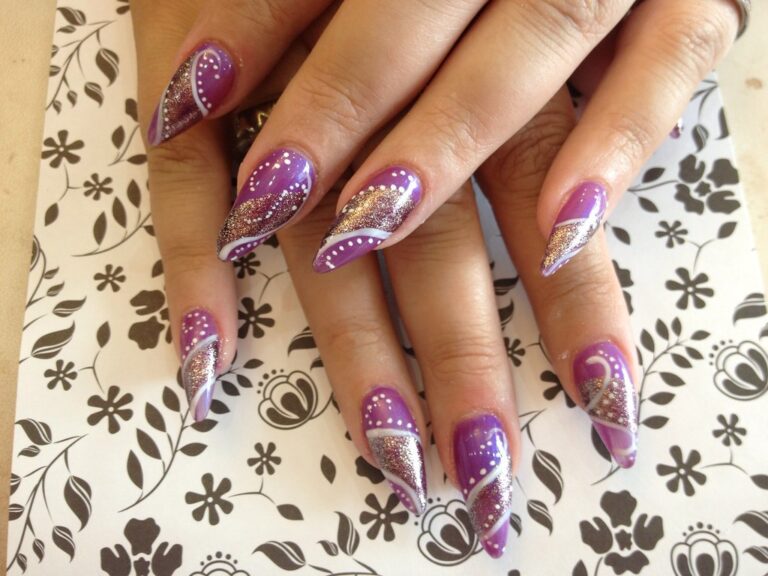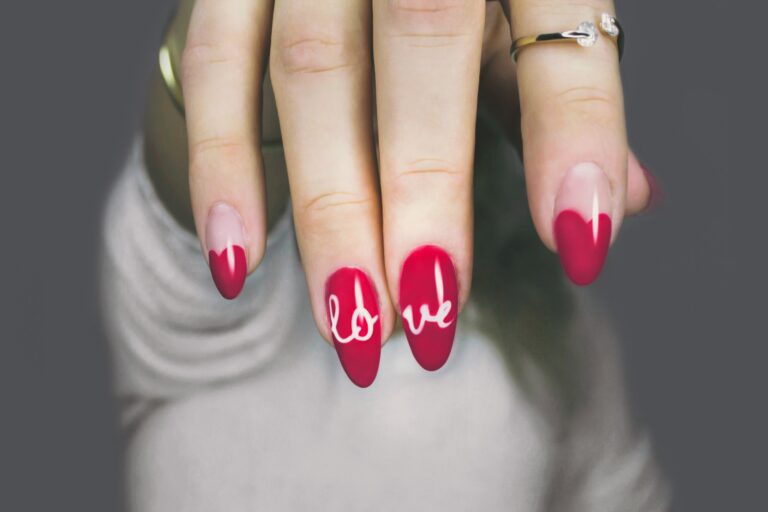“Splitting Secrets: The Truth Behind Nails Splitting”
Deprecated: mb_convert_encoding(): Handling HTML entities via mbstring is deprecated; use htmlspecialchars, htmlentities, or mb_encode_numericentity/mb_decode_numericentity instead in /home/u654140373/domains/nailinspire.com/public_html/wp-content/plugins/kadence-pro/dist/elements/elements-init.php on line 1267
Deprecated: Function utf8_decode() is deprecated in /home/u654140373/domains/nailinspire.com/public_html/wp-content/plugins/kadence-pro/dist/elements/elements-init.php on line 1275
Nail splitting can be a frustrating and uncomfortable experience for many individuals. Understanding the factors that contribute to nail health and the science behind nail splitting is crucial in preventing and addressing this common issue. This article explores the anatomy of nails, the causes of nail splitting, preventive measures, diagnostic approaches, holistic wellness strategies, and cosmetic solutions to help readers achieve stronger, healthier nails.
Key Takeaways
- Maintaining a balanced diet rich in vitamins and minerals is essential for nail health.
- Regular moisturizing and protective treatments can help prevent nail splitting.
- Consulting a healthcare professional is important for diagnosing underlying health issues related to nail splitting.
- Hydration, stress management, and herbal remedies can contribute to overall nail wellness.
- Use of artificial nails and gel manicures should be approached with caution due to potential adverse effects on nail health.
Understanding Nail Anatomy and Health

The Structure of the Nail
The human nail is a complex structure that serves as both a tool and a protective shield for the delicate tissues of the fingers and toes. At the core of nail anatomy is the nail plate, the hard and translucent part that we often refer to simply as ‘the nail.’ Beneath the nail plate lies the nail bed, a layer of skin that provides nutrients and support.
Nails grow from the nail matrix, an area under the skin at the nail’s base, which is responsible for producing cells that become the nail plate. As these cells harden and are pushed out, they form the visible nail that extends beyond the fingertip. The cuticle, or the eponychium, is the tissue that overlaps the nail plate at the base, providing a seal that protects the nail matrix from infection.
Tip: Regular moisturizing of the cuticle and nail bed can help maintain nail health and prevent splitting.
Understanding the structure of the nail is essential for recognizing how various conditions can affect its health and appearance. For example, discoloration or changes in nail shape can be indicators of underlying health issues.
Factors Contributing to Nail Health
The health of our nails is influenced by a myriad of factors, ranging from genetics to the daily care we provide. Hydration plays a crucial role in maintaining nail flexibility and preventing brittleness. Similarly, exposure to harsh chemicals can strip nails of their natural oils, leading to dryness and splitting.
A balanced diet rich in vitamins and minerals is essential for nail health. Vitamins A, C, and E, as well as B-complex vitamins, are particularly important for nail strength and growth. Minerals like iron, zinc, and magnesium support the repair and development of nail tissues.
Stress and lack of sleep can also negatively impact nail health, as they do with overall health. Chronic stress may lead to nail biting or picking, which can damage the nail bed and cuticles.
Tip: Regularly moisturizing your hands and nails can help maintain nail health, especially after exposure to water or cleaning products.
Common Nutritional Deficiencies Affecting Nails
Common nutritional deficiencies can have a significant impact on nail health. Iron, biotin, and calcium deficiencies, in particular, are known to cause brittle or cracked nails. Ensuring a balanced diet that includes these essential nutrients is crucial for maintaining strong and healthy nails. Here’s a brief overview of the key nutritional deficiencies affecting nails:
- Iron Deficiency: Anemia resulting from low iron levels can lead to brittle nails and other nail abnormalities.
- Biotin Deficiency: Inadequate biotin intake can cause weak, brittle nails that are prone to splitting.
- Calcium Deficiency: Insufficient calcium can result in dry, brittle nails that are more susceptible to splitting and breakage.
It’s important to address these nutritional deficiencies through dietary adjustments and, if necessary, supplementation. A balanced diet rich in iron, biotin, and calcium can contribute to stronger, healthier nails.
The Science of Nail Splitting

What Causes Nails to Split?
[Nail splitting](https://www.verywellhealth.com/split-nail-8400172), also known as onychoschizia, can be a frustrating and often painful condition. The primary culprit behind this phenomenon is the weakening of the nail’s structure, which can occur due to a variety of factors. One of the most common is dehydration of the nail plate, leading to brittleness and eventual splitting. Other contributing elements include:
- Frequent exposure to water or chemicals
- Trauma or injury to the nail
- Environmental conditions such as extreme cold or dryness
Certain habits can also exacerbate the issue, such as:
- Prolonged use of nail polish or harsh removers
- Aggressive manicure techniques
Tip: Keeping nails properly moisturized and avoiding prolonged contact with water can help prevent splitting.
In some cases, nail splitting may signal an underlying health condition or nutritional deficiency. It’s important to consider the health of your nails as a reflection of your overall well-being.
The Role of Keratin in Nail Integrity
Keratin, a type of protein, is the fundamental building block of nails. It is responsible for the strength and resilience of the nail structure. When nails are healthy, the keratin layers are densely packed and well-hydrated, providing a robust barrier against damage.
However, various factors can compromise keratin integrity, leading to brittle and splitting nails. These factors range from environmental stressors to chemical exposure and even habitual nail-biting. To maintain the keratin quality, it’s essential to protect nails from harsh conditions and provide them with the necessary nutrients.
Proper hydration and a balanced diet rich in biotin, amino acids, and other vitamins can support keratin production and repair. Here’s a list of nutrients that are particularly beneficial for nail keratin:
- Biotin (Vitamin B7)
- Omega-3 fatty acids
- Vitamin C
- Zinc
- Iron
Tip: Regularly moisturizing your nails can help maintain keratin levels, preventing dryness and splitting.
How External Factors Influence Nail Splitting
Our nails are constantly exposed to a variety of external factors that can lead to splitting. Frequent contact with water, especially hot water, can weaken nails, as can exposure to harsh chemicals found in cleaning products and nail polish removers. The use of acetone-based removers is particularly detrimental, stripping nails of natural oils and moisture.
Environmental conditions also play a significant role. Low humidity and cold weather can cause nails to become dry and brittle, making them more prone to splitting. Conversely, high humidity can lead to nail swelling and subsequent splitting as they contract back to their normal size.
Protective gloves can be a simple yet effective barrier against many of these external factors. When performing household chores or using cleaning agents, gloves help shield the nails from potential damage. Additionally, opting for gentler, acetone-free nail polish removers can mitigate the negative effects on nail health.
Tip: Regularly moisturizing your hands and nails can help maintain hydration levels and prevent splitting caused by dryness.
Preventive Measures for Stronger Nails

Best Practices in Nail Care
Adopting a routine that promotes nail health is essential for preventing splitting and maintaining strong, beautiful nails. Moisturizing is a cornerstone of nail care; applying a nourishing cuticle oil and hand cream can significantly reduce the likelihood of brittle nails. It’s important to keep nails clean and dry, as prolonged exposure to water can weaken nail structure.
Regular trimming is also crucial. Nails should be cut straight across to avoid ingrown nails and other complications. When filing, do so in one direction to prevent stress on the nail plate. Here’s a simple list of best practices:
- Keep nails clean and dry
- Moisturize with cuticle oil and hand cream
- Trim nails straight across
- File in one direction
Tip: Avoid using your nails as tools to prevent unnecessary stress and potential damage. Instead, opt for the appropriate tool for the job.
Protective Treatments and Products
To maintain the integrity of your nails, incorporating protective treatments and products into your nail care routine is essential. These specialized items are designed to fortify the nail structure, providing a shield against the daily wear and tear that can lead to splitting.
Moisturizers and cuticle oils are fundamental for keeping the nail bed and surrounding skin hydrated. A well-hydrated nail is less prone to brittleness and subsequent splitting. For those seeking an extra layer of protection, nail strengtheners and hardeners can be applied. These products often contain ingredients like calcium and keratin, which are vital for nail health.
Here are some recommended products for nail protection:
- Nail Tek Protection Plus 3, for hard and brittle nails
- Olive & June, OPI, and Essie nail strengtheners
- Orly Nailtrition, a comprehensive nail treatment
- CND RescueRxx, a nourishing nail oil
Tip: Always apply a base coat before painting your nails. This not only helps the polish adhere better but also acts as a barrier, protecting the nail from staining and potential damage from nail polish chemicals.
Lifestyle Adjustments for Nail Strength
When it comes to strengthening nails, maintaining a balanced diet and staying hydrated are essential. Additionally, supplementing with biotin can significantly improve nail health. It’s important to keep nails dry to prevent weakening and splitting. Healthy cuticles also play a crucial role in promoting longer, stronger nails. Moisturizing the cuticles regularly can make a noticeable difference in nail strength and overall health.
Diagnosing the Underlying Issues

When to Seek Professional Help
While minor nail splitting can often be managed with home care, certain signs warrant a visit to a healthcare professional. Persistent or severe splitting, especially when accompanied by other symptoms, may indicate an underlying health issue that requires medical attention.
- Discoloration or changes in nail shape can be a clue to systemic problems.
- Pain, swelling, or signs of infection are red flags that should not be ignored.
- If nail problems persist despite proper nutrition and nail care, it might be time to consult a dermatologist or other specialist.
Remember, your nails are a reflection of your overall health. Don’t hesitate to seek professional advice if you notice unusual changes.
Early diagnosis and treatment can prevent complications and ensure the health of your nails. If you suspect that your nail splitting is more than just a cosmetic concern, make an appointment with a healthcare provider.
Medical Conditions Linked to Nail Splitting
When it comes to nail splitting, it’s crucial to consider the underlying medical conditions that may be contributing to this issue. Medical conditions such as psoriatic arthritis, anemia, and eczema can have a significant impact on the health of your nails, leading to increased fragility and susceptibility to splitting. Understanding the connection between these conditions and nail health is essential for effective treatment and management. It’s important to consult with a healthcare professional to accurately diagnose and address any underlying medical issues that may be affecting the strength and integrity of your nails.
The Impact of Medications on Nail Health
Certain medications can have a profound effect on nail health, sometimes leading to splitting or other issues. For instance, systemic retinoids, commonly prescribed for severe acne, are known to cause nail changes. Similarly, antiretroviral agents used in the treatment of HIV can lead to conditions like paronychia, an infection of the nail fold which may exacerbate nail splitting.
Medications such as tofacitinib, used for autoimmune conditions, have shown promise in treating nail disorders like lichen planus, indicating that some drugs can have beneficial effects on nail health. However, the relationship between medications and nail health is complex and varies from one individual to another.
Tip: Always consult with a healthcare provider before starting or stopping any medication, as the impact on nail health can be significant and unexpected.
Vitamins are also implicated in the maintenance of nail health. A literature review suggests that certain vitamins are popular among physicians and patients for their benefits to nails, among other things. It is crucial to understand that while some medications can harm nail health, others might be used therapeutically to improve it.
Holistic Approaches to Nail Wellness

Herbal Remedies and Supplements
When it comes to nail wellness, incorporating herbal remedies and supplements can be beneficial. These natural remedies have been known to support nail health and strength. Some popular herbal supplements for nails include:
- Nettle Leaf
- Black Seed Oil
- Biotin
- Vitamin A, C, D, and E
These supplements are rich in essential nutrients that contribute to overall nail wellness. It’s important to consult with a healthcare professional before incorporating any new supplements into your routine.
In addition, remember that hydration and a balanced diet play a crucial role in maintaining healthy nails. Adequate water intake and a diet rich in vitamins and minerals can significantly impact nail strength and appearance.
Tip: Always consult with a healthcare professional before starting any new supplement regimen.
The Benefits of Hydration and Diet
Maintaining a well-hydrated body is crucial for the health of your nails. Water plays a pivotal role in keeping the nail bed adequately moist and improving the nail’s overall flexibility. Dehydration can lead to brittle nails that are more prone to splitting.
A balanced diet rich in vitamins and minerals is equally important for nail strength and integrity. Nutrients such as biotin, vitamin E, and calcium are known to support nail health. Incorporating foods high in these nutrients can help fortify the nails and promote growth. For instance, almonds are an excellent source of vitamin E, while dairy products can provide the calcium necessary for stronger nails.
Tip: Consistently including nutrient-dense foods in your diet and staying hydrated can significantly improve the condition of your nails over time.
Stress Management Techniques
Managing stress is a critical component in maintaining overall nail health. Chronic stress can lead to hormonal imbalances that may weaken nail structure and contribute to splitting. Incorporating stress management techniques into your daily routine can help mitigate these effects.
Practice mindfulness and relaxation strategies such as deep breathing, meditation, and mindfulness to maintain a calm and clear mind. Regular physical activity is also beneficial, as it can reduce stress hormones and promote well-being.
- Deep breathing exercises
- Meditation sessions
- Regular physical activity
- Mindfulness practices
Remember, even small steps towards stress reduction can have a significant impact on your nail health. Start with simple practices and gradually build a routine that fits your lifestyle.
Navigating Cosmetic Solutions

The Pros and Cons of Artificial Nails
Artificial nails, such as gel and acrylic options, offer a cosmetic solution for those looking to enhance the appearance of their nails. Acrylic nails are a popular choice due to their durability and lower cost compared to gel nails. They can provide a desirable length and shape for nails that are otherwise too short or weak. However, the application process involves chemicals and can be damaging to the natural nail over time.
Gel nails, on the other hand, are known for their glossy finish and the flexibility they offer. They tend to look more natural and have a less pungent odor during application. Yet, gel nails require curing under UV light, which raises concerns about skin exposure. Additionally, gel nails can be more expensive and may peel or lift if not applied correctly.
Tip: When choosing between artificial nail types, consider your lifestyle, nail health, and budget to make an informed decision.
Both types of artificial nails necessitate regular maintenance and can harbor bacteria if not properly cared for. It’s essential to weigh the aesthetic benefits against the potential risks to nail health when opting for artificial nails.
Nail Hardeners and Conditioners
Nail hardeners and conditioners are specialized products designed to strengthen and nourish the nails. They work by providing essential nutrients and protective coatings to promote nail integrity and resilience. Some popular nail hardeners and conditioners include:
- Nail Magic®: Home of the original Nail Hardener & Conditioner, created in 1960. Offers a range of hardeners, conditioners, and strengtheners.
- DermaNail Nail Strengthener and Cuticle Cream Set: Repairs damage from chipping, cracking, peeling, splitting, and breaking, ensuring thicker nails.
- Nail Magic Strong Botanical Nail Strengthener: Contains horsetail, rich in silica and nutrients, vegan, and cruelty-free, helping with splitting, cracking, and breaking.
- Mavala Scientifique Penetrating Nail Hardener: A penetrating nail hardener that works effectively to strengthen nails.
- Revitanail Nail Strengthener: A nail strengthener that promotes healthy and strong nails.
- Sally Hansen Diamond Strength: A nail hardener that provides diamond-like strength and shine.
Tip: When using nail hardeners and conditioners, it’s important to follow the application instructions carefully for optimal results.
Gel Manicures: A Double-Edged Sword?
Gel manicures have gained popularity for their long-lasting and vibrant finish. However, it’s important to consider the potential drawbacks associated with this nail treatment. One of the key concerns is the removal process, which can be time-consuming and may lead to nail damage if not done properly. Additionally, the cost of gel nail applications, especially for intricate designs, can be higher compared to other options. It’s essential to weigh the benefits against these drawbacks before opting for a gel manicure.
When considering the frequency of gel manicures, it’s recommended to assess the impact on nail health. While gel manicures offer durability, frequent application and removal can weaken the nails over time. It’s advisable to consult with a professional to determine the optimal frequency for maintaining nail strength and integrity.
Tip: Prioritize nail health and consider the long-term effects of gel manicures on nail strength and condition.
After consulting with experts in the nail care industry, it’s evident that gel manicures have both advantages and potential risks. Understanding these factors is crucial for making informed decisions about nail treatments.
When it comes to navigating cosmetic solutions, NAILinspire.com is your ultimate destination. Our online nail art design library offers a wide range of inspiration, tutorials, and tips to help you achieve the perfect nail art. Whether you’re a beginner or a seasoned nail artist, our collection of designs and techniques will inspire and elevate your nail game. Visit NAILinspire.com today and unlock a world of creativity at your fingertips.
Frequently Asked Questions
What are the common factors contributing to nail health?
Common factors contributing to nail health include genetics, diet, hydration, and overall nail care practices.
How can I prevent nails from splitting?
Preventive measures for stronger nails include maintaining proper nail care, using protective treatments, and making lifestyle adjustments to promote nail strength.
Are there medical conditions linked to nail splitting?
Yes, medical conditions such as psoriasis, thyroid disorders, and fungal infections can be linked to nail splitting.
What are some holistic approaches to nail wellness?
Holistic approaches to nail wellness include herbal remedies, supplements, hydration and diet, and stress management techniques.
Do artificial nails affect nail health?
Artificial nails can affect nail health, especially if not applied or removed properly. They can weaken natural nails and increase the risk of nail splitting.
Are gel manicures harmful to nail integrity?
Gel manicures can be a double-edged sword as they provide long-lasting color and durability, but the use of UV light and harsh removal methods can weaken nails and lead to splitting.

